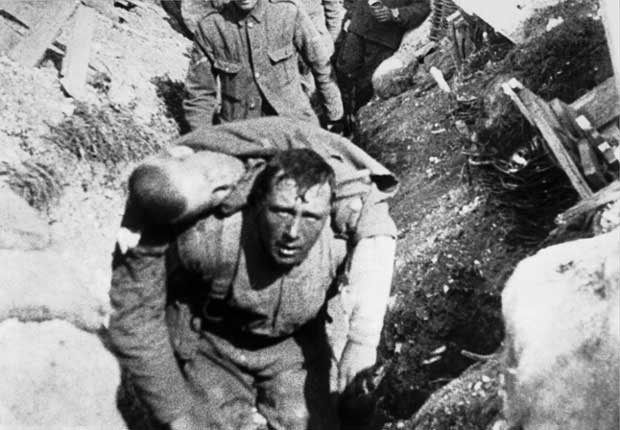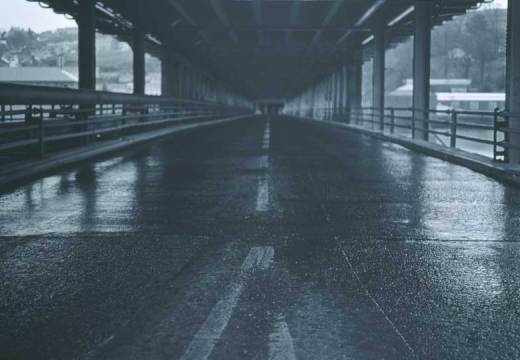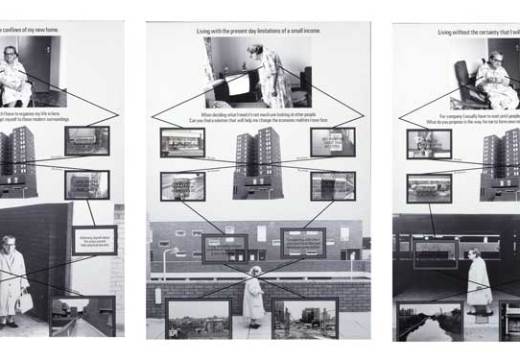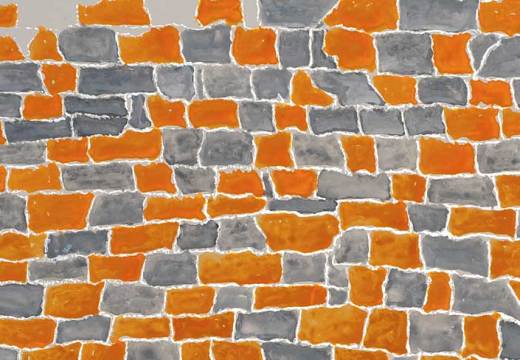Any thought that the National Portrait Gallery’s ‘The Great War in Portraits’ is going to present a conventional account of the First World War is dispelled immediately when you are greeted by Jacob Epstein’s Torso in Metal from The Rock Drill (Tate). De-personalised and de-humanised, Epstein’s modernist man-machine is a negation of everything portraiture is about. Does its presence at the entrance to the exhibition allude to the idea that this was the first truly modern conflict, a slaughter conducted on an ‘industrial’ scale? Thankfully, the NPG avoids such clichés. This thoughtful and thought-provoking exhibition gives the war a human face, revealing the crucial role that portraiture played in shaping perceptions of the conflict.
Rock Drill is really a statement of intent here: this is not an exhibition about military history, but about art. The exhibition looks at how the war forced artists to find new ways of describing a conflict that was unlike anything that had gone before. In its original form, made in 1913, Rock Drill was a much larger figure, an aggressive embodiment of masculine potency in the machine age. But as the appalling realities of modern warfare became apparent, Epstein revised the sculpture, cutting it down to a truncated torso, head and a single arm. The final version, completed in 1916, is now a mutilated fragment, enfeebled by its own inhumanity.
The transformation of Rock Drill reflects a loss of faith in the potential of modernity. The First World War also fatally undermined confidence in the values of the old social and political order, and the traditional art that reflected these values. The exhibition examines how the conflict disrupted the conventions of idealised formal portraiture, demanding more truthful and realistic modes of depiction. It stages a series of contrasts – Leaders and Followers, the Valiant and the Damned, Tradition and the Avant Garde – that compare the visual rhetoric of the political and military elites with portrayals that faced up to the realities of death and destruction on the front.
The curators have taken an international approach, rather than purely looking at the British perspective. State portraits of the European monarchs project the prestige and confidence of the great powers on the eve of war, but also show how ostensibly similar these rulers were, many of whom were blood relations. Next to these paintings is a press photograph of a bewildered Gavrilo Princip, the 19 year old Serbian whose assassination of the Archduke Franz Ferdinand and his wife plunged the continent into war, and ultimately brought an end to many of the imperial dynasties.
War artists, such as William Orpen, were commissioned to document the conflict and its personalities. Initially, this served propaganda purposes, and fed the cult of celebrity around war heroes and military commanders. However, the artists increasingly found it impossible to ignore the experience of ordinary soldiers in the trenches, and the wounded, disfigured and the dead. Many of these unpalatable images, such as The Dead Stretcher-Bearer by Gilbert Rogers (Imperial War Museum), were suppressed until after the war.
The new media of photography and film were also important in documenting the conflict, feeding a public appetite for greater veracity and realism. The exhibition includes two propaganda films about the Battle of the Somme, one British and one German, shown together for the first time.
In a war in which the fate of individual soldiers was often down to luck, the nature of heroism needed to be redefined. At the centre of the exhibition is a section entitled ‘The Valiant and the Damned’, which explores the indiscriminate way in which some became heroes, and were decorated for their bravery, whilst others were victims, marked by mutilation and disfigurement. A series of pastel portraits by Henry Tonks, shown alongside harrowing medical photographs, records the reconstructive surgery carried out on soldiers who were facially disfigured by bullet wounds.
An installation of 40 photographs of men and women, presented without descriptive labels, invites us to imagine the individual stories told in each of their faces. The exhibition catalogue reveals who they were: they include well-known figures, such as the war poets Siegfried Sassoon and Wilfred Owen, alongside unnamed and unknown soldiers from the far corners of Britain’s empire. A photograph of Jack Cornwall, a 16-year-old sailor killed at the Battle Jutland and posthumously awarded the Victoria Cross, is shown next to Henry Farr, who was shot at dawn for cowardice when he refused to return to the front.
How the Great War should be represented is still a contested subject. As the centenary commemorations get underway, increasingly politicised debates are taking place over whether this was a futile conflict, in which an out-of-touch elite sent millions to a pointless slaughter, or a just war, marked by values of courage, honour and sacrifice. Without taking a side in this controversy, the NPG has made a bold and insightful contribution to understanding how art transformed the way the war was represented and understood.
‘The Great War in Portraits’ is at the National Portrait Gallery, London, until 15 June 2014.
Unlimited access from just $16 every 3 months
Subscribe to get unlimited and exclusive access to the top art stories, interviews and exhibition reviews.















![Masterpiece [Re]discovery 2022. Photo: Ben Fisher Photography, courtesy of Masterpiece London](http://www.apollo-magazine.com/wp-content/uploads/2022/07/MPL2022_4263.jpg)
It’s time for the government of London to return to its rightful home